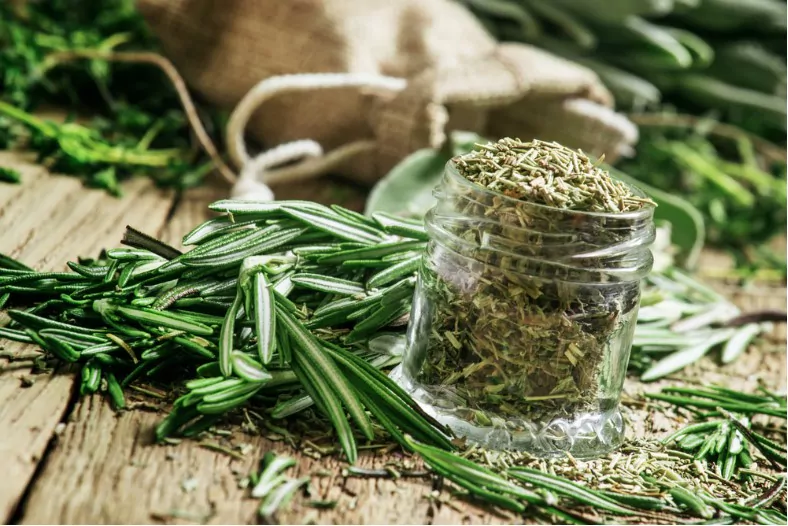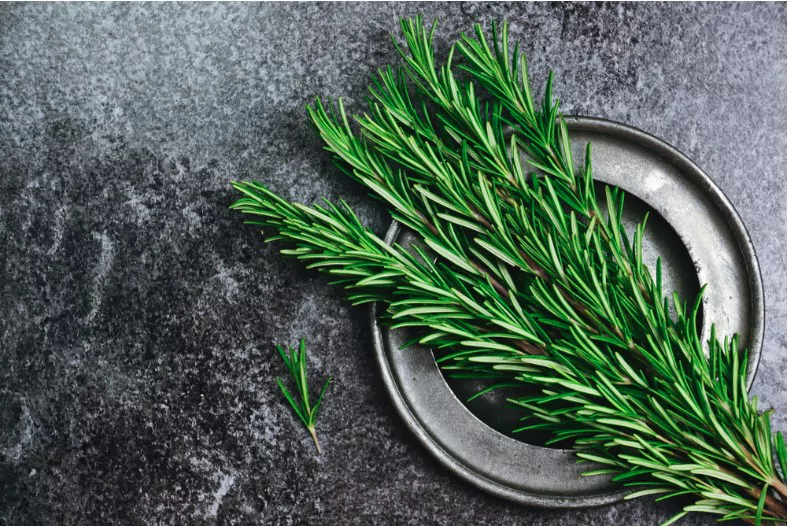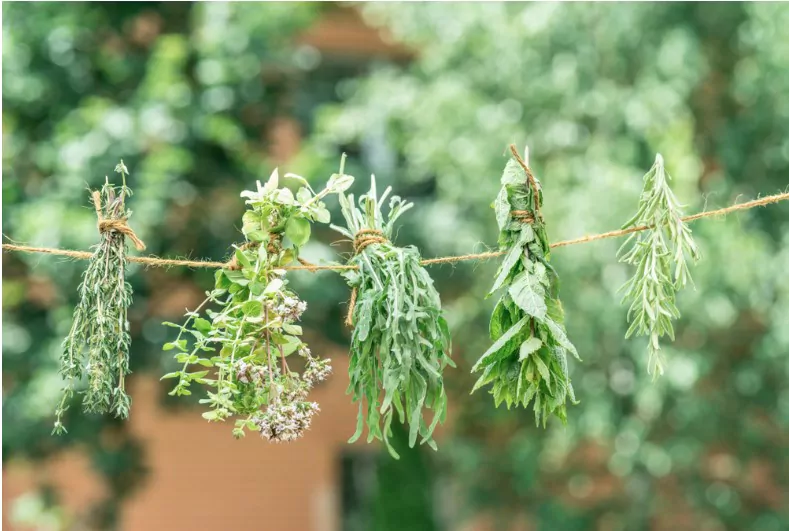How To Dry Rosemary Leaves? Step-by-Step Guide

Rosemary is not just a fragrant herb that infuses our meats, soups, stews, bread, and vegetables with its distinctive flavor. It’s also loaded with health benefits, from its antimicrobial properties to its potential for improving digestion and even boosting memory. Fresh rosemary can be a delightful addition to dishes, but knowing how to dry rosemary leaves ensures that you can enjoy its flavor and benefits all year round. Let’s delve into the steps, benefits, and uses of dried rosemary.
1 Why Dry Rosemary?
When you dehydrate rosemary, you’re not only extending its shelf life, but you’re also intensifying its flavor and ensuring the delivery of its vitamins, antioxidants, and essential oils in every dish you prepare. Dried rosemary can be stored much longer than its fresh counterpart, which usually lasts about one to two weeks in the refrigerator. Plus, rosemary-dried leaves are versatile, making them a staple in kitchens worldwide.
2 Preparing Fresh Rosemary for Drying

Before you start the drying process, it’s vital to prepare the rosemary sprigs.
- Rinsing: Begin by rinsing your fresh rosemary under cold water. This will remove any dust or debris that might be clinging to the sprigs. After rinsing, gently pat the rosemary leaves dry with paper towels.
- Selecting: Choose only the best sprigs. Look for vibrant green needles, avoiding any that look brown or wilted.
3 Different Methods to Dry Rosemary Leaves
Air Drying

This method is the most traditional and often yields premium-quality dried rosemary.
- How to: Tie small bundles of rosemary sprigs with a rubber band. Hang them upside down in a well-ventilated area away from direct sunlight. A paper bag with several holes can be placed around the sprigs to protect from dust while ensuring airflow.
- Drying Time: This method can take anywhere from 10-14 days. Ensure the rosemary leaves are dehydrated before storing them to prevent mold.
Oven Drying
Oven drying is quicker than air drying, but it’s crucial to keep the temperature low to retain the herb’s flavor and benefits.
- How to: Preheat your oven to its lowest temperature, ideally no more than 180°F (80°C). Spread the rosemary sprigs in a single layer on a baking sheet. Place in the oven, leaving the door slightly ajar to allow moisture to escape.
- Drying Time: 1-2 hours. Check periodically to ensure they don’t burn. The leaves should be brittle to the touch.
Using a Dehydrator

If you often dry herbs or other foods, investing in a dehydrator might be worthwhile.
- How to: Spread the rosemary sprigs in a single layer on dehydrator trays. Follow your dehydrator’s guidelines, but generally, a temperature setting of about 95°F (35°C) works well.
- Drying Time: 3-4 hours.
4 Storing Dried Rosemary

Once your rosemary leaves are completely dry, strip the needles from the stems. Store these dried rosemary needles in an airtight container or glass jar, placing them in a cool, dry place. Properly stored rosemary can retain its flavor for up to a year.
5 Uses of Dried Rosemary
- Cooking: Dried rosemary is a staple in many dishes, from marinades for meats to soups, stews, breads, and sauces.
- Rosemary Tea: Steep a sprig of dried rosemary in boiling water for a delightful rosemary tea, which not only offers a unique flavor but also boasts health benefits like improving digestion.
- Hair Growth: Rosemary has been linked to promoting hair growth. An oil infusion using dried rosemary can be massaged into the scalp to combat dandruff and boost hair shine.
6 Additional Benefits of Rosemary
Beyond its culinary use, rosemary offers a multitude of benefits:
- Health: As mentioned, rosemary aids in improving digestion and has memory-enhancing properties. It’s also rich in antioxidants and vitamins.
- Skin and Hair: Rosemary oil, derived from dried leaves, can improve skin quality and tackle issues like dandruff. It’s believed to enhance hair growth and shine.
- Antimicrobial Properties: Rosemary’s organic compounds have antimicrobial properties, adding another layer of benefits when used in dishes.
7 Fresh vs. Dried Rosemary in Cooking
While fresh rosemary sprigs have a milder flavor, dried rosemary tends to be more concentrated. Adjust your recipes accordingly; typically, you’ll need a third of the amount of dried rosemary compared to fresh.
8 Wrapping Up
Whether you’re using rosemary to enhance the fragrance of your home, flavor your favorite dishes, or for its multitude of health benefits, knowing how to dry rosemary leaves is an invaluable skill. The process is simple, and with the proper storage, you can have a year-round supply of this premium herb at your fingertips.
Remember, whether you’re using rosemary for its smell, flavor, or health benefits, always opt for organic sources and handle them with care. The next time someone asks about “how to dry rosemary leaves,” you’ll not only have the answer but you’ll also be well-equipped to discuss its vast array of uses and benefits. Happy drying!
Community Q&A
About This Article
This article has been viewed 375 times.



